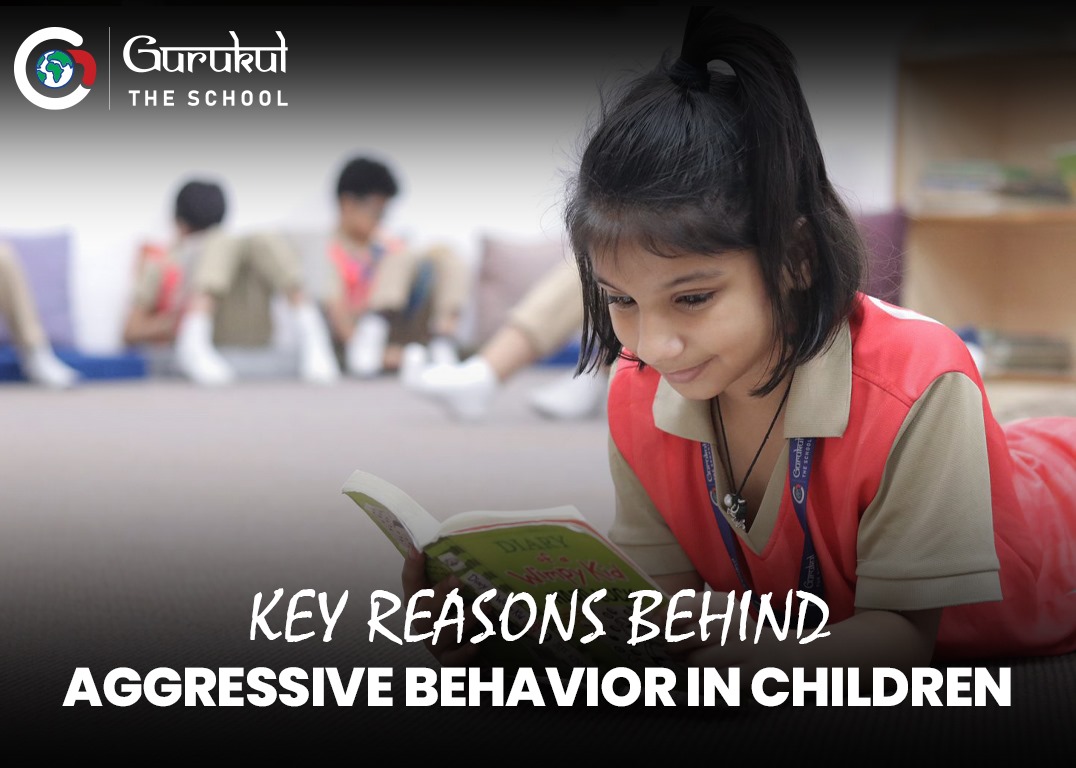Key Reasons Behind Aggressive Behavior in Children
posted on Oct 03, 2024
Children often display aggression when they feel misunderstood, mostly because of their frustration and inability to express emotions, leading to uncontrolled outbursts

As per the National Library of Medical Science, 1 in 10 children suffer from chronic aggression. Aggression in children usually manifests in the form of hitting, yelling, or disobedience, often arising from inbuilt frustration, fear, or difficulty managing emotions. For instance, a child may lash out when they are unable to solve a problem or have been feeling misunderstood. At Gurukul The School, a reputable school in Ghaziabad, we recognize behaviors of this nature while laying significance on attention and understanding rather than punishment.
In fact, our learned faculty members work closely with the students, guiding them through emotional regulation techniques and conflict resolution, all while nurturing empathy. Let’s just say our goal remains to help children express their emotions constructively so that they end up growing into compassionate, confident individuals capable of smartly tackling aggression.
Why Do Children Display Aggressive Behaviours?
- When they feel misunderstood:
Children often display aggression when they feel misunderstood, mostly because of their frustration and inability to express emotions, leading to uncontrolled outbursts. Not many might understand, but this behavior stems from the need for connection and validation.
By recognizing these signals, parents and guardians can help children feel heard while guiding them toward healthier emotional expression. As the saying goes, "Behind every behavior, there is a feeling. And behind each feeling, there is a need. When we meet that need, rather than focussing on the behavior, we begin to deal with the cause."
Children may display aggression when upset by displaying behaviors like throwing toys and yelling. This reaction, on most occasions, is a result of being overwhelmed and worried. We at Gurukul The School address these behaviors by adopting a supportive approach, helping children to understand and manage their emotions.
For instance, teachers turn to techniques like calm conversations and emotional coaching to help children detach from aggression. By sowing the seeds of emotional intelligence, we help our students build self-control and positive social interactions, eventually eliminating aggressive behaviors.
Children often resort to aggression when they feel isolated, as loneliness directly associates itself with negative behaviors like further pushing others away or acting out for attention. Preventing isolation by creating an inclusive environment where children feel valued helps in keeping aggressive behaviors at bay.
Encouraging group activities, teaching social skills, and promoting open communication help children form positive relationships with everyone around, making isolation a thing of the past. In the end, it all comes down to developing a sense of belonging, where isolation has no place of its own. We would hence like to recommend parents to always bear in mind that a connected child is always a calm child, and respond to them accordingly.
- When they try to imitate:
Aggressive behaviors among children on certain occasions may also result from imitating their peers. When children observe others acting out, they try mimicking that behavior, believing it is an acceptable way to express emotions or gain attention. Education plays a crucial role in breaking this cycle.
It has been seen that teaching children about positive social skills, emotional regulation, and the consequences of aggression helps with curbing aggressive behaviors. It is the joint responsibility of parents and educational institutes to emphasize empathy, communication, and conflict resolution to empower children to choose constructive behaviors, creating a more peaceful and reassuring environment.
- When they seek attention:
Children may opt for aggression to gather attention, especially when they feel neglected or overlooked. Outbursts like hitting, yelling, or rebelliousness often serve as a way to make their presence known, even if it leads to negative consequences. This behavior is nothing but a prominent sign of children seeking connection and assurance.
This is where parents and teachers alike need to acknowledge children’s needs and teach them healthier ways to express themselves, redirecting these attention-seeking patterns into positive behaviors. The best way out is to provide attention by taking assistance from encouragement, praise, and active listening.
Summing Up:
Aggressive behaviors in children can be addressed effectively by turning to understanding, patience, and structured guidance. It is important for parents to note that on most occasions, such behaviors are not purposeful but only an outlet for underlying emotions like frustration, insecurity, or a need for attention.
By identifying these root causes, it becomes manageable to help children express their emotions in healthier ways. By means of this blog post today, we at Gurukul The School, a well-known best school in Ghaziabad, would like to advise parents to try and make an effort to recognize the emotional needs of your children. At our school, our teachers and counselors closely monitor students, offering individualized support to prevent any child from feeling isolated or overwhelmed.
We also emphasize open communication with parents to ensure they are fully aware of their child's emotional and behavioral development. Regular meetings and updates help us keep parents informed and ensure a solid home-school partnership. We believe every child deserves the opportunity to grow in a nurturing environment. And for that to happen, the primary criterion is to keep all sorts of aggression at bay.